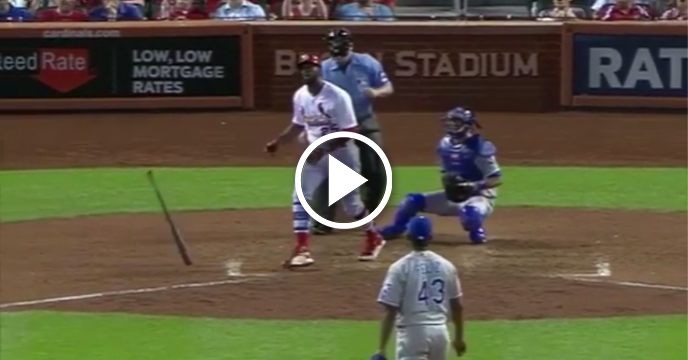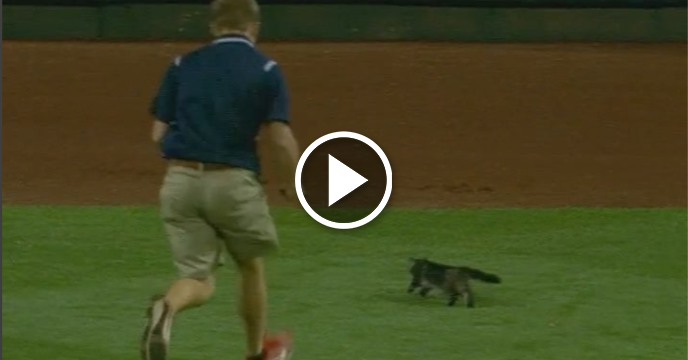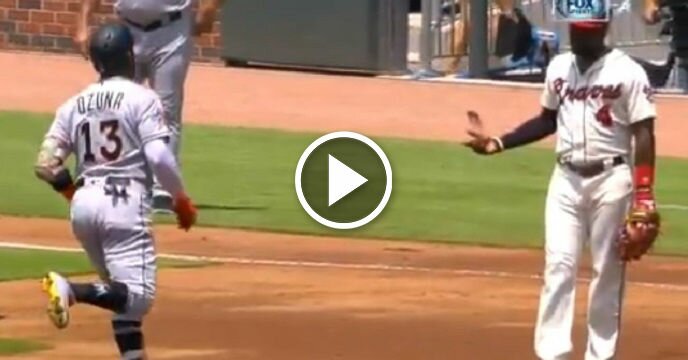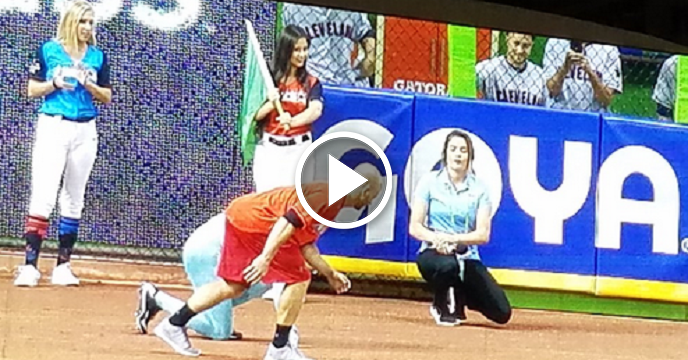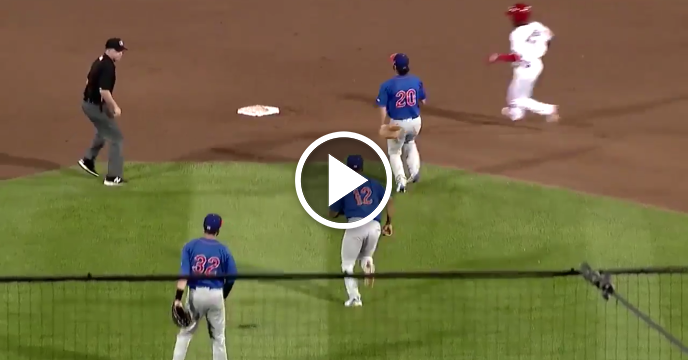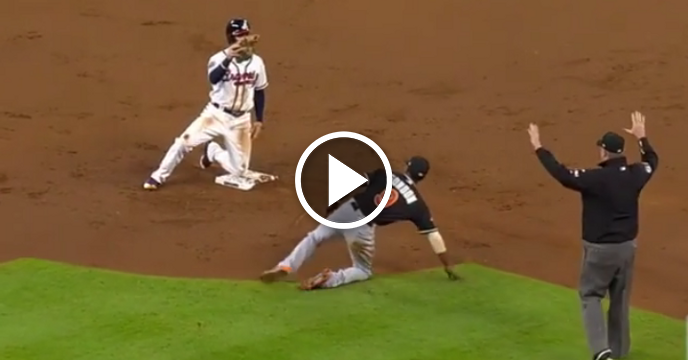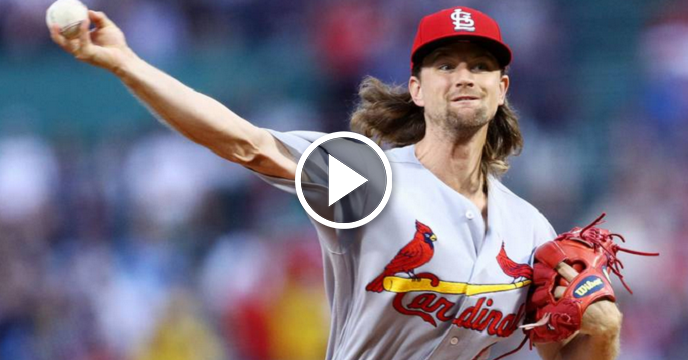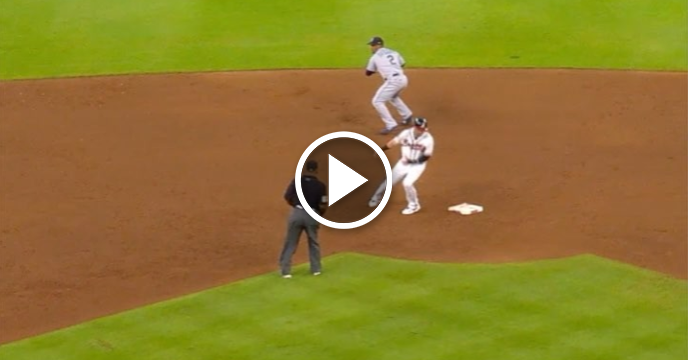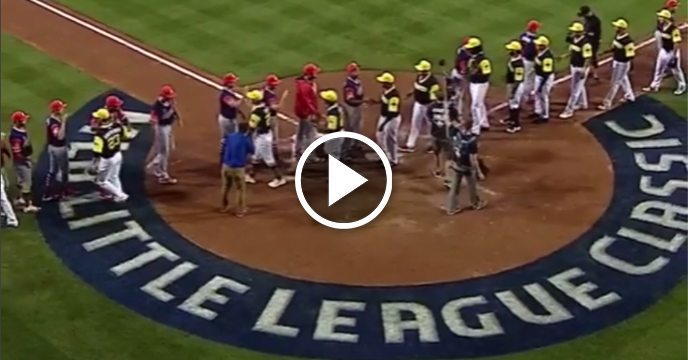
Friday night’s National League Wild Card Game has caused no shortage of controversy and debate. The broad feeling has been that the umpires who called the infield fly rule on Andrelton Simmons‘ eighth inning pop up to Pete Kozma which fell safely did so incorrectly and that this perceived error possibly cost the Atlanta Braves a victory. Whilst it is impossible to know whether or not the Braves would have overturned the 6-3 St Louis Cardinals had the umpires not called the infield fly rule, what can be said for sure is that the umpires were correct. Here is why.
The infield fly rule states (in full):
An INFIELD FLY is a fair fly ball (not including a line drive nor an attempted bunt) which can be caught by an infielder with ordinary effort, when first and second, or first, second and third bases are occupied, before two are out. The pitcher, catcher and any outfielder who stations himself in the infield on the play shall be considered infielders for the purpose of this rule.
When it seems apparent that a batted ball will be an Infield Fly, the umpire shall immediately declare “Infield Fly” for the benefit of the runners. If the ball is near the baselines, the umpire shall declare “Infield Fly, if Fair.”
The ball is alive and runners may advance at the risk of the ball being caught, or retouch and advance after the ball is touched, the same as on any fly ball. If the hit becomes a foul ball, it is treated the same as any foul.
If a declared Infield Fly is allowed to fall untouched to the ground, and bounces foul before passing first or third base, it is a foul ball. If a declared Infield Fly falls untouched to the ground outside the baseline, and bounces fair before passing first or third base, it is an Infield Fly.
Rule 2.00 (Infield Fly) Comment: On the infield fly rule the umpire is to rule whether the ball could ordinarily have been handled by an infielder—not by some arbitrary limitation such as the grass, or the base lines. The umpire must rule also that a ball is an infield fly, even if handled by an outfielder, if, in the umpire’s judgment, the ball could have been as easily handled by an infielder. The infield fly is in no sense to be considered an appeal play. The umpire’s judgment must govern, and the decision should be made immediately.
When an infield fly rule is called, runners may advance at their own risk. If on an infield fly rule, the infielder intentionally drops a fair ball, the ball remains in play despite the provisions of Rule 6.05(l). The infield fly rule takes precedence.
It’s a long rule, but the effect is that there are three conditions that have to be fulfilled for the infield fly rule to take effect:
1) There must be runners on first and second at least and with fewer than two out.
2) An infielder must be able to handle the ball at least as easily as an outfielder.
3) That infielder must be in a position to make the catch with ‘ordinary effort’.
Once those three conditions are fulfilled the umpire should call and signal ‘infield fly’.
In the play in question the first condition was fulfilled as there were runners on first and second with one out. The second condition was also clearly fulfilled as it was the shortstop, Kozma, who got to where the ball was going to land first. He was deep into the outfield, yes, but was there first and was calling for it. The third condition is possibly the tricky one; could he have made the play with ‘ordinary effort’?
It has been suggested that no, he could not have because he had to go out extraordinarily far. But the rule does not specify a timeframe; it does not say it must be ordinary effort from the word go. Kozma had to go some distance out, but as this screenshot demonstrates he was underneath the ball and in a position to make the play comfortably.

From there is is ordinary effort and it looked for all the world like Kozma would make the play. One can see the runner returning to second base even. Indeed, if it had not been a play that could have been made with ordinary effort then it would not have looked like such a spectacular break for Atlanta when the ball fell. With Kozma in a position to make the play, all the conditions for the infield fly rule were fulfilled and the umpire then quite correctly called ‘infield fly’.
There are three main objections to this: first that the infielder was too deep for the infield fly rule to apply. This is clearly not applicable as the rule does not specify a distance, just that an infielder have a play. The play in this case was Kozma’s so by definition it is an infield fly.
The second is that the rule is intended to protect the baserunners and in this case did anything but. But that should not matter. The umpires cannot pick and choose when to apply the rule, they have to apply it consistently. And especially in this case as the umpire cannot know how the play will unfold. Likely it will be an easy pop out, hence the call. But even if it is dropped, there is no guarantee that the Braves will benefit. Matt Holliday was surprised the Kozma let it fall and did not pick it up quickly, but if he had swooped on it immediately (if it had been a planned play, for instance, or if he saw what was happening early) then he had a play at third. As mentioned above the runners were on their way back to their bases. The umpire cannot try to judge the spirit of the rule, he must simply apply it as it is written.
The third is that the umpire called it late. But like the first objection, this does not apply. The only timeframe in the rule is that the umpire must make the call immediately after it becomes apparent. In this case it did not become apparent until Kozma was underneath the ball so the umpire could not call it until then. But once it was apparent the umpire did indeed make the call immediately. One can see in this screenshot that the umpire is beginning to raise his arm just as Kozma starts to break forward again.

He has thus already decided to make the call before the play unfolds and as per the rule immediately after it became apparent. It is also earlier than many have given him credit: the ball is not even in the picture yet.
For all the criticism of the umpires that has been heard in the past two days they clearly not only applied the infield fly rule correctly, but in fact followed the letter of the rule. Braves fans are unlikely to be convinced, but the fact is that they will have to look elsewhere for something to blame for their loss.
 Share
Share 


